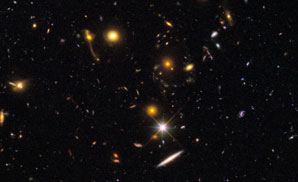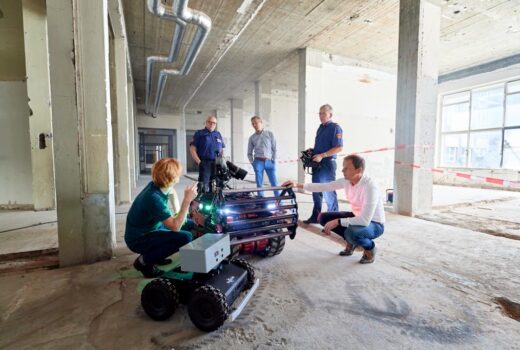Herschel ziet waterdamp rond sterren

2000 maal de massa van de zon “This star can only grow bigger,” says Annie Zavagno,Laboratoire d’Astrophysique de Marseille. Massive stars are rareand short-lived. To catch one during formation presents a goldenopportunity to solve a long-standing paradox in astronomy.”According to our current understanding, you should not be able toform stars larger than eight solar masses,” says Dr Zavagno. This is because the fierce light emitted by such large starsshould blast away their birth clouds before any more mass canaccumulate. But somehow they do form. Many of these ‘impossible’stars are already known, some containing up to 150 solar masses,but now that Herschel has seen one near the beginning of its life,astronomers can use the data to investigate how it is defying theirtheories. Herschel is the largest astronomical telescope ever to be placedinto space. The diameter of its main mirror is four times largerthan any previous infrared space telescope and one and a half timeslarger than Hubble. As stars begin to form, the surrounding dustand gas is warmed up to a few tens of degrees above absolute zeroand starts to emit at far-infrared wavelengths. The Earth’satmosphere completely blocks the majority of these wavelengths andthus observations from space are necessary. Using its unprecedented resolution and sensitivity, Herschel isconducting a census of star-forming regions in our Galaxy. “BeforeHerschel, it was not clear how the material in the Milky Way cametogether in high enough densities and at sufficiently lowtemperatures to form stars,” says Sergio Molinari, Istituto diFisica dello Spazio Interplanetario, Roma. A new Herschel image released today covering a number of stellarnurseries in the Milky Way shows how it happens. Stellar embryosfirst appear inside filaments of glowing dust and gas draped acrossthe Galaxy. These form chains of stellar nurseries, tens oflight-years long, wrapping the Galaxy in a web of star birth. Herschel has also been surveying deep space beyond our Galaxy,and has measured the infrared light from thousands of othergalaxies, spread across billions of light-years of the Universe.Each galaxy appears as just a pinprick but its brightness allowsastronomers to determine the rate of star birth within it. Roughlyspeaking, the brighter the galaxy the more stars it isforming. Here, too, Herschel has challenged our previous understanding byshowing that galaxies have been evolving over cosmic time muchfaster than previously thought. Astronomers believed that galaxieshave been forming stars at about the same rate for the last threebillion years. Herschel shows this is not true. In the past, there were many more so-called ‘starburst’ galaxiesforming stars at 10-15 times the rate we see in the Milky Waytoday. But what triggered this frantic activity is not completelyunderstood. “Herschel will now let us investigate the reasons forthis behaviour,” says Steve Eales, Cardiff University, UK. Herschel is also a prime instrument for detecting the smallestforms of matter: molecules. It has made the first discovery inspace of a new ‘phase’ of water. It is electrically charged andunlike the more familiar phases, namely solid ice, liquid water andgaseous steam, it does not occur naturally on Earth. In the birthclouds surrounding young stars, however, where ultraviolet light ispumping through the gas, this irradiation can knock an electron outof the water molecule, leaving it with an electrical change. “This detection of ionised water vapour came as a surprise,”says Arnold Benz, ETH Zurich, Switzerland. “It tells us that thereare violent processes taking place during the early birth stageswhich lead to widespread energetic radiation throughout thecloud.” “These are still early days for Herschel and this is just thebeginning of all the science that we will get from this mission inthe years to come,” says Göran Pilbratt, ESA Herschel ProjectScientist. |
Meest Gelezen
Wederom intimidatie van journalisten door universiteit, nu in Delft
‘Burgerschapsonderwijs moet ook verplicht worden in hbo en wo’
Raad van State: laat taaltoets nog niet gelden voor hbo-opleidingen
Vrouwen houden universiteit draaiende, maar krijgen daarvoor geen waardering
Extra geld voor bètafaculteiten is daar nooit terechtgekomen



